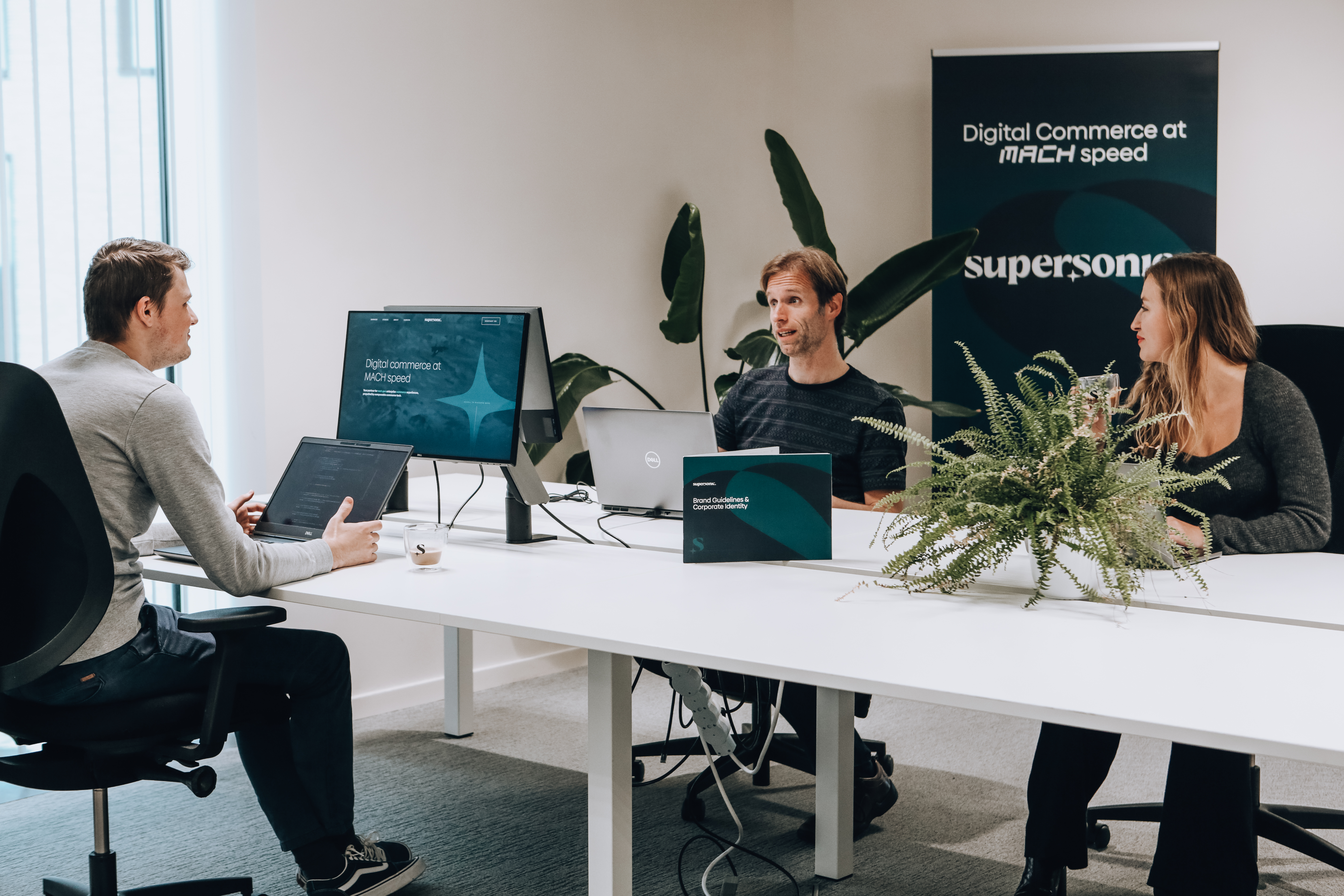
Author

Lisa Leus
Publishing date
Oct 1, 2024

A guide to effective working methods
In today's dynamic and fast-paced work environment, companies constantly seek methodologies that enable them to adapt, innovate, and deliver value efficiently. Enter Agile working methods – a set of principles and practices designed to meet the evolving needs of modern teams and projects. But it is more than just a set of practices; it's a mindset that prioritises flexibility, collaboration, and continuous improvement. Let's delve into what Agile is, and its advantages, and specifically explore the Scrum framework, along with how we at supersonic effectively implement it to accelerate our customers’ projects.


Lisa Leus
Oct 1, 2024

A dynamic approach to project management
At its core, Agile is an iterative approach to project management and software development that prioritises incremental development, close collaboration between cross-functional teams, and the ability to respond to change quickly. Unlike traditional waterfall methods, where the entire project is planned upfront and executed in sequential phases, Agile breaks the project into smaller, manageable chunks called iterations or sprints. These iterations typically last from one to four weeks, allowing for frequent deliveries of working software, and thus constant feedback loops to ensure continuous alignment with customer requirements. Agile embraces uncertainty and welcomes change throughout the project lifecycle.
Adapting this Agile lifestyle can offer several benefits for your team and organisation. Thereby also your customers will experience the impact and reap the benefits from it.
Agile allows teams to adapt to changing requirements, priorities and market conditions, ensuring that the product remains aligned with customer needs.
Agile promotes regular communication and collaboration among team members, fostering a culture of transparency, trust, and shared ownership. It facilitates a shared understanding of goals.
Agile's shorter development cycles and continuous delivery allow organisations to release products faster. By delivering working increments at the end of each sprint, Agile accelerates feedback and time-to-market, giving a competitive edge.
With a focus on continuous integration and testing, Agile helps identify and address issues early in the development process, resulting in higher-quality deliverables.
A framework for team success
Scrum is a popular Agile framework that provides a structured approach to project management, focusing on teamwork, accountability, and iterative progress. It encourages self-organization, empowering teams to make collective decisions, which leads to higher engagement and morale. Scrum is a lightweight framework that divides projects into small, time-boxed iterations called sprints, each ending with a product increment.
Scrum relies on several key events to ensure smooth project management and team alignment:
Daily Stand-ups
Daily stand-ups are short, daily meetings where team members discuss progress, challenges, and plans for the day. These meetings foster transparency and alignment, keeping the team updated on current tasks and potential roadblocks.
Sprint Planning
The sprint planning is a collaborative session where the team selects and commits to work items (user stories or tasks) to be completed within the upcoming sprint. The team picks items from a priority-ordered backlog, discusses functionality, and estimates the effort required. This ensures that every team member understands the tasks and can contribute effectively. Effort estimations should be made with the entire team in mind, so any member can handle the task. These estimates can take various forms, such as hours, Fibonacci, t-shirt sizes, or story points.
One of our recent internship projects brought a game-changing tool to our sprint planning process! Developed by John, who has since become a key member of our team, this platform helps streamline estimation sessions. Team members submit their estimates, and any outliers spark valuable discussions, ensuring a clearer understanding of task complexity and more accurate predictions. Plus, the scrum master can easily set the estimation scale, making the process even smoother.
Sprint Review
At the end of each sprint, the team presents their completed work to stakeholders during the sprint review. This session allows for feedback on the product increment and helps align the project with customer expectations.
Sprint Retrospective
After the sprint review, the team holds a sprint retrospective to reflect on the sprint. They discuss what went well, what can be improved, and actionable steps for enhancing future performance. This ongoing refinement helps teams adapt and improve continuously.
A culture of collaboration and continuous improvement
At supersonic, Agile and Scrum are not just buzzwords – they are ingrained into the company culture and workflow. By adhering to these Scrum practices, we foster a culture of collaboration, continuous improvement, and accountability, enabling us to deliver high-quality products that meet our customers' needs effectively, and that does not go unnoticed:
Our collaboration with the supersonic team has been exceptional. Their daily commitment to Scrum principles—transparency, collaboration, and continuous improvement—enhances our development process and delivers outstanding results for Casa International. Their professionalism and proactive approach make them a valued partner, ensuring smooth communication and alignment among all collaborators.
— Product Owner, Casa International
By embracing Agile principles and practices, we streamline our processes, enhance team productivity, and ultimately achieve greater, supersonic success in their projects. Let’s dive into our next project together in an Agile way, unlocking new possibilities and pushing the boundaries of what we can achieve together!